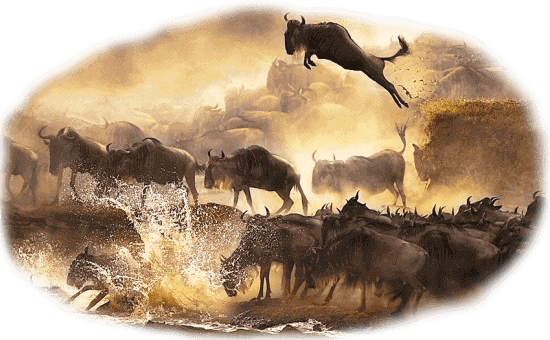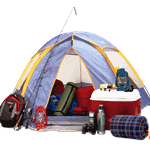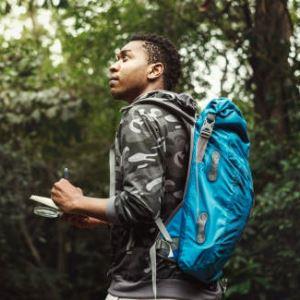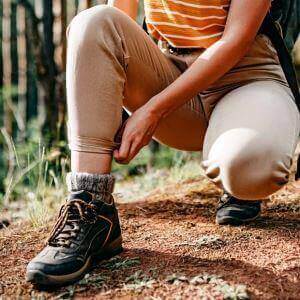 From the snowy landscapes of Finland to the sun-drenched plains of East Africa, Kenya offers Finnish travelers an unforgettable escape into the wild. This Kenya travel guide for Finnish citizens highlights the essential tips, destinations, and cultural insights you need for a seamless adventure. Kenya is a land of contrasts savannas teeming with wildlife, palm-fringed beaches, and bustling cities all wrapped in vibrant culture. For Finnish tourists seeking sunshine and natural wonder, timing your visit is key. The ideal months are from January to March and again from June to October. These are Kenya's dry seasons, offering perfect safari conditions and minimal rain. Avoid the wet seasons of April, May, and November, which can affect road travel and wildlife visibility. One of the main attractions for Finnish travelers is Kenya's iconic safari experience. Masai Mara National Reserve is world-famous for the annual Great Migration, a spectacle of wildebeest, zebras, and predators on the move. Amboseli National Park charms visitors with its majestic elephant herds and views of Mount Kilimanjaro. For those interested in exploring more remote areas, Tsavo East and West provide raw, expansive landscapes rich in wildlife and fewer crowds. Kenya is more than just wildlife. Its warm and welcoming people, diverse cuisine, and colorful culture create opportunities for meaningful interactions. Finnish tourists should embrace local customs by greeting with a handshake, learning a few Swahili phrases like “Jambo” (hello) and “Asante” (thank you), and dressing modestly, especially in rural or religious areas. Staying safe is also crucial. Always use licensed tour operators and avoid traveling alone at night, especially in less-developed regions. Tap water is generally not safe to drink, so bottled water is recommended. It’s also a good idea to check current travel advisories and ensure vaccinations are up to date before departure. Kenya offers an exciting contrast to the Arctic environment that Finnish travelers are accustomed to. Instead of icy winds and long winters, visitors are welcomed by a warm sun, golden savannas, and the rhythmic call of exotic wildlife. The sheer diversity of landscapes, from the snow-capped peaks of Mount Kenya to the white sandy beaches of Diani, ensures that every traveler finds something unforgettable. Whether it’s watching lions lounge under acacia trees in the Masai Mara, soaking up the coastal sun in Mombasa, or sharing stories around a campfire with local guides under a star-lit sky, Kenya promises memories that will last a lifetime. Finnish tourists often marvel at the vibrant mix of culture and nature, from the traditional Maasai villages to modern Nairobi's lively atmosphere. Each experience paints a different shade of Kenya's rich tapestry. Even beyond the safaris, visitors can explore historical sites like Lamu Old Town or indulge in spicy Swahili dishes that offer a flavorful journey of their own. Adventure seekers can go hiking in the Aberdares or kite surfing along the Indian Ocean coast. Kenya is not just a destination it's a transformation, offering a rejuvenating escape for Finnish tourists looking to swap snow boots for sandals and the quiet of the Arctic for the vibrant hum of Africa.
From the snowy landscapes of Finland to the sun-drenched plains of East Africa, Kenya offers Finnish travelers an unforgettable escape into the wild. This Kenya travel guide for Finnish citizens highlights the essential tips, destinations, and cultural insights you need for a seamless adventure. Kenya is a land of contrasts savannas teeming with wildlife, palm-fringed beaches, and bustling cities all wrapped in vibrant culture. For Finnish tourists seeking sunshine and natural wonder, timing your visit is key. The ideal months are from January to March and again from June to October. These are Kenya's dry seasons, offering perfect safari conditions and minimal rain. Avoid the wet seasons of April, May, and November, which can affect road travel and wildlife visibility. One of the main attractions for Finnish travelers is Kenya's iconic safari experience. Masai Mara National Reserve is world-famous for the annual Great Migration, a spectacle of wildebeest, zebras, and predators on the move. Amboseli National Park charms visitors with its majestic elephant herds and views of Mount Kilimanjaro. For those interested in exploring more remote areas, Tsavo East and West provide raw, expansive landscapes rich in wildlife and fewer crowds. Kenya is more than just wildlife. Its warm and welcoming people, diverse cuisine, and colorful culture create opportunities for meaningful interactions. Finnish tourists should embrace local customs by greeting with a handshake, learning a few Swahili phrases like “Jambo” (hello) and “Asante” (thank you), and dressing modestly, especially in rural or religious areas. Staying safe is also crucial. Always use licensed tour operators and avoid traveling alone at night, especially in less-developed regions. Tap water is generally not safe to drink, so bottled water is recommended. It’s also a good idea to check current travel advisories and ensure vaccinations are up to date before departure. Kenya offers an exciting contrast to the Arctic environment that Finnish travelers are accustomed to. Instead of icy winds and long winters, visitors are welcomed by a warm sun, golden savannas, and the rhythmic call of exotic wildlife. The sheer diversity of landscapes, from the snow-capped peaks of Mount Kenya to the white sandy beaches of Diani, ensures that every traveler finds something unforgettable. Whether it’s watching lions lounge under acacia trees in the Masai Mara, soaking up the coastal sun in Mombasa, or sharing stories around a campfire with local guides under a star-lit sky, Kenya promises memories that will last a lifetime. Finnish tourists often marvel at the vibrant mix of culture and nature, from the traditional Maasai villages to modern Nairobi's lively atmosphere. Each experience paints a different shade of Kenya's rich tapestry. Even beyond the safaris, visitors can explore historical sites like Lamu Old Town or indulge in spicy Swahili dishes that offer a flavorful journey of their own. Adventure seekers can go hiking in the Aberdares or kite surfing along the Indian Ocean coast. Kenya is not just a destination it's a transformation, offering a rejuvenating escape for Finnish tourists looking to swap snow boots for sandals and the quiet of the Arctic for the vibrant hum of Africa.
Quick Facts for Finnish Travelers Planning a Kenyan Safari
| Aspect | Details for Finnish Tourists |
|---|---|
| Best Travel Months | January to March, June to October |
| Top Safari Parks | Masai Mara, Amboseli, Tsavo |
| Wildlife To See | Lions, Elephants, Rhinos, Giraffes, Wildebeest |
| Language Tips | Learn basic Swahili: "Jambo", "Asante" |
| Travel Safety | Use licensed guides, avoid isolated areas at night |
| Cultural Etiquette | Respect customs, dress modestly, greet with a smile |
Best Time to Visit Kenya for Finnish Tourists Seeking Sunshine
Kenya's sun-soaked climate offers a welcome escape for Finnish tourists looking to leave behind the long, dark winters of the Arctic north. The best time to experience Kenya largely depends on the type of trip you're planning, but overall, Finnish travelers should aim to visit during the dry seasons: January to March and June to October. These months provide the most favorable conditions for wildlife viewing, outdoor excursions, and comfortable travel. In particular, Finnish visitors who wish to enjoy Kenya's legendary safari adventures will find these dry periods ideal. The absence of rain means the animals are easier to spot as they congregate around watering holes, and the roads within national parks remain more navigable. The dry season also coincides with the Great Migration in Masai Mara from July to October a once-in-a-lifetime spectacle where millions of wildebeest, zebras, and antelope thunder across the plains. January to March is another attractive window. This is when the weather is hot and dry, offering clear skies that make for excellent photography, especially at sunrise and sunset. These months are perfect for exploring Kenya's diverse natural beauty, from the snow-capped Mount Kenya to the white-sand beaches of the Indian Ocean coastline. It is advisable to avoid the long rainy season that occurs from April to May and the short rains in November. These periods can result in muddy roads and a more difficult time spotting wildlife. Travel disruptions are also more likely during these months due to washed-out routes and reduced accessibility to remote areas. For Finnish tourists, it's important to also consider comfort in unfamiliar climates. Kenya's heat, while enjoyable, can be intense compared to Finnish standards. Lightweight, breathable clothing, hydration, and sun protection are crucial. On that note, a practical clothing tip for any trip is to pack light layers for safari mornings, which can be chilly, and lighter attire for afternoons. Neutral colors such as beige, olive, and brown are best for blending in during game drives. If you're unsure what to pack, here is one key recommendation: prioritize both comfort and cultural respect. Many Finnish travelers find it useful to follow basic guidelines for local dress norms, especially when visiting villages or urban centers. Clothing advice for Finnish tourists in Kenya should emphasize modesty without compromising on coolness and practicality. Bringing a scarf or shawl can be especially helpful for both sun protection and covering up when needed. The best time to visit Kenya for Finnish travelers is during the dry months, when nature is at its most accessible and inviting. These periods from January to March and again from June to October provide clear skies, optimal wildlife viewing opportunities, and a more enjoyable travel experience overall. Unlike Finland's frigid winters, Kenya offers pleasant warmth that invites outdoor adventures, whether you’re exploring savannas or relaxing on a coastal beach. Dry months are especially ideal for safari trips. Game viewing becomes easier as animals tend to gather near water sources, making it more likely for tourists to spot the Big Five in iconic parks like Masai Mara, Amboseli, and Tsavo. These months also mean better road conditions, fewer insects, and stunning golden-hour photography that captures Kenya's raw beauty. In contrast, the rainy seasons from April to May and again in November can result in travel delays, muddy terrain, and diminished wildlife visibility. Planning ahead is essential. Book national park entries, safaris, and accommodations early, especially if traveling during peak seasons like the Great Migration in Masai Mara. Also consider how different elevations affect temperatures nights can be cool in higher regions, so layering your clothing helps. By preparing smartly and respecting local advice, Finnish travelers can experience an unforgettable journey through Kenya's diverse and welcoming landscapes.
What is the Ideal Season in Kenya for Finnish Tourists to Travel?
For Finnish tourists looking to swap snowflakes for sunshine, Kenya offers a stunning year-round travel opportunity. However, to truly make the most of your visit, choosing the right season is crucial. Kenya experiences two main dry seasons: January to March and June to October. These months are widely regarded as the best times to visit, especially for those eager to witness the country's incredible wildlife and diverse landscapes. During the dry seasons, game drives become more rewarding. Animals gather around rivers and watering holes, making it easier to spot lions, elephants, rhinos, and other majestic creatures. The vegetation is less dense, offering unobstructed views perfect for photography. In particular, the period from July to October coincides with the Great Migration in Masai Mara, when millions of wildebeest and zebras move across the plains a breathtaking sight and a bucket-list experience for any nature enthusiast. January to March brings warm temperatures and fewer tourists, making it ideal for those who prefer a quieter experience. The skies are clear, the roads are passable, and the scenery is lush yet accessible. It’s a great time for beach vacations on the Kenyan coast, hiking around Mount Kenya, or cultural exploration in towns and villages. On the other hand, the long rains from April to May and the short rains in November can present travel challenges. Heavy rains often result in muddy roads, swollen rivers, and limited wildlife visibility. These conditions can also lead to delays or cancellations of planned excursions. For Finnish tourists, adjusting to Kenya’s warmer climate is important. Dressing in breathable fabrics, applying sunscreen, and staying hydrated are musts. Mornings and evenings can be cooler, particularly in higher-altitude areas like the Central Highlands, so it’s wise to pack light layers. Neutral-colored clothing also helps you blend in on safaris and avoids drawing attention from wildlife. If your goal is to enjoy Kenya at its most hospitable, aim to travel during the dry months. Whether you’re gazing across the savanna in search of the Big Five, exploring Swahili culture on the coast, or watching the sun rise over Mount Kilimanjaro, these seasons offer the most stable, enjoyable, and awe-inspiring conditions for your adventure. With a little preparation and smart planning, Finnish travelers can embrace all the beauty and warmth that Kenya has to offer.
Top Wildlife Safari Parks in Kenya for Finnish Tourists to Explore
Kenya is one of the world’s most iconic safari destinations, offering Finnish tourists a front-row seat to breathtaking wildlife and natural beauty. For first-time visitors, navigating the wide variety of national parks may seem overwhelming, but a few standout locations promise rewarding and accessible experiences. Each park has its own unique flavor, allowing travelers from Finland to choose an adventure that matches their interests and comfort levels. Masai Mara National Reserve is a top choice for many first-time travelers, especially between July and October when the Great Migration unfolds. During this dramatic event, millions of wildebeest and zebras cross the plains in search of greener pastures, often pursued by predators such as lions and crocodiles. The spectacle is one of the most unforgettable natural phenomena in the world. Masai Mara also has a high concentration of wildlife year-round, including the Big Five lions, elephants, buffalo, leopards, and rhinos. Amboseli National Park is another excellent option, known for its large elephant herds and stunning backdrop of Mount Kilimanjaro. Finnish tourists who enjoy photography will find this park especially rewarding. The terrain is relatively flat, making wildlife spotting easy and frequent. The park also offers well-developed infrastructure, ensuring comfortable accommodations and reliable guides for a seamless safari experience. For those looking to explore off the beaten path, Tsavo East and Tsavo West National Parks present a more rugged and remote wilderness. These two parks form one of the largest conservation areas in Kenya and are perfect for those with a deeper sense of adventure. The red-soil elephants, Mzima Springs, and lava flows in Tsavo West are just a few of the geological and biological wonders that make the area unique. If you’re short on time or prefer a more controlled environment, Nairobi National Park just a short drive from the capital offers the chance to see lions, giraffes, and rhinos against a backdrop of city skyscrapers. It’s an ideal introduction to Kenya’s wildlife without venturing far from urban comforts. Each of these destinations fits well within a list of Kenya national parks suitable for first-time visitors. These parks are not only famous for their diverse wildlife but are also equipped with well-established infrastructure and knowledgeable guides who make the experience smooth and educational. Whether you prefer a fully guided safari in a luxury lodge or a rustic tented camp experience under the stars, the parks offer a wide spectrum of options to match every comfort level and interest. The appeal of Kenya's parks lies in their ability to combine adventure with accessibility. Game drives are organized professionally, and the vehicles are often customized for optimal viewing. Visitors are likely to encounter a wide array of animals including lions, giraffes, elephants, zebras, and countless species of birds. For Finnish tourists embarking on their first African safari, this level of wildlife variety is nothing short of astonishing. Kenya's park staff and local communities are known for their warm hospitality. Many rangers and guides speak excellent English and are enthusiastic about sharing their deep knowledge of the flora and fauna. Educational talks, cultural experiences, and safe nature walks are often part of the package, enriching the overall visit. With such variety and welcoming support, Finnish tourists can feel at ease while also being immersed in an environment completely different from their homeland. These parks serve as an excellent starting point for discovering the magic of African wilderness in a way that is safe, engaging, and deeply memorable.
Where Should Finnish Tourists Go for the Best Kenyan Safari Parks?
Kenya is a dream destination for many Finnish travelers, and the highlight for most is the unforgettable safari experience. For first-time visitors, selecting the right park can feel overwhelming due to the country’s many options. However, several top safari parks offer diverse wildlife, breathtaking views, and smooth logistics. These locations strike a balance between adventure and accessibility, making them ideal for those experiencing Kenya’s wilderness for the first time. Here are the best parks to consider:
- Masai Mara National Reserve: Known for its sweeping savannas and abundant wildlife, Masai Mara is the crown jewel of Kenyan safaris. From July to October, it hosts the Great Migration, when millions of wildebeest and zebras thunder across the plains. For first-time Finnish tourists, it offers reliable game drives, a chance to see the Big Five, and a variety of camps ranging from budget-friendly to luxury lodges.
- Amboseli National Park: Famous for its herds of elephants and stunning views of Mount Kilimanjaro, Amboseli is an ideal choice for wildlife photography. The park is compact, which means you won’t have to travel far between sightings. It also features well-maintained roads and accommodations, making it a comfortable introduction to Kenya’s safari experience.
- Tsavo East and West National Parks: These sister parks offer a more rugged and remote adventure for those seeking solitude and wild scenery. Tsavo West is known for Mzima Springs and lava landscapes, while Tsavo East is home to red-soiled elephants and vast plains. Although slightly more challenging, both parks are unforgettable for nature lovers.
- Nairobi National Park: Perfect for tourists on a tight schedule, this park is just a short drive from Kenya’s capital city. Despite its urban setting, the park is home to lions, rhinos, giraffes, and over 400 bird species. It’s a great option for Finnish travelers looking for a quick but authentic safari taste.
Each of these parks provides outstanding wildlife experiences and is supported by trained guides, quality facilities, and a strong focus on conservation. Affordable safari tours in Kenya for Finns are often available through trusted local operators, ensuring a seamless and enriching journey from start to finish.
Kenya Travel Tips And Cultural Etiquette For Finnish Tourists
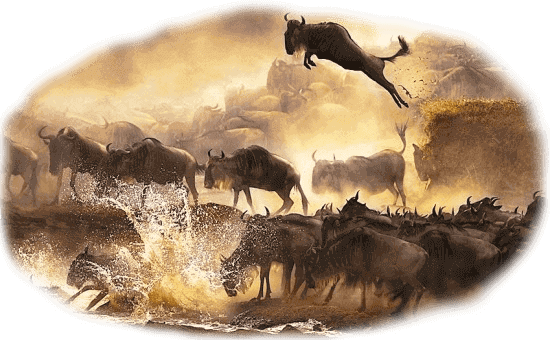 Kenya is a culturally rich and naturally diverse country that promises a rewarding experience for Finnish travelers. From majestic wildlife and sweeping savannas to vibrant urban centers and historic coastal towns, the range of experiences is vast. To fully enjoy what Kenya offers, it helps to understand and respect local customs, ensure your safety, and travel with awareness. For travelers coming from Finland, this guide offers practical cultural tips and essential travel advice. Cultural respect goes a long way. While Kenya is diverse in language and traditions, simple gestures like a warm handshake and a friendly smile are universally appreciated. Greeting people with "Jambo" (hello) and saying "Asante" (thank you) in Swahili can open doors to genuine interactions. In rural or more conservative areas, modest clothing is important, especially for women. Long trousers, skirts, and covered shoulders are encouraged when visiting local homes or religious sites. Another key tip is to prioritize health and safety. Tap water in Kenya is not recommended for drinking, so always opt for bottled or purified water. It's also wise to get necessary vaccinations and travel insurance before departure. When exploring remote areas or national parks, travel with licensed guides or reputable tour companies. Avoid venturing out alone at night, particularly in unfamiliar neighborhoods. Kenyan cuisine is an adventure in itself. Finnish tourists can look forward to flavorful dishes like nyama choma (grilled meat), ugali (maize porridge), and samosas. Street food can be delicious, but choose clean vendors and eat cooked items hot to avoid digestive issues. Respect for wildlife and nature is also important. Always follow park rules and keep a safe distance from animals. Do not litter or feed animals during safaris. Kenya takes conservation seriously, and visitors are expected to support these efforts by being mindful of their impact on the environment. When visiting markets or interacting with artisans, polite bargaining is expected, but always approach it respectfully. Vendors appreciate friendly negotiation, and it's a great way to engage with locals while supporting small businesses. The top things to do in Kenya for travelers from Finland include going on a safari in Masai Mara, exploring Swahili culture in Lamu, climbing Mount Kenya, and relaxing on the pristine beaches of Diani or Watamu. Each of these activities reflects a different facet of Kenya's rich identity and offers a meaningful connection to the land and its people. With thoughtful planning and a respectful attitude, Finnish tourists can enjoy not only Kenya's breathtaking beauty but also the hospitality and warmth of its people. Kenya is more than a destination it's a cultural exchange that leaves a lasting impression on every traveler.
Kenya is a culturally rich and naturally diverse country that promises a rewarding experience for Finnish travelers. From majestic wildlife and sweeping savannas to vibrant urban centers and historic coastal towns, the range of experiences is vast. To fully enjoy what Kenya offers, it helps to understand and respect local customs, ensure your safety, and travel with awareness. For travelers coming from Finland, this guide offers practical cultural tips and essential travel advice. Cultural respect goes a long way. While Kenya is diverse in language and traditions, simple gestures like a warm handshake and a friendly smile are universally appreciated. Greeting people with "Jambo" (hello) and saying "Asante" (thank you) in Swahili can open doors to genuine interactions. In rural or more conservative areas, modest clothing is important, especially for women. Long trousers, skirts, and covered shoulders are encouraged when visiting local homes or religious sites. Another key tip is to prioritize health and safety. Tap water in Kenya is not recommended for drinking, so always opt for bottled or purified water. It's also wise to get necessary vaccinations and travel insurance before departure. When exploring remote areas or national parks, travel with licensed guides or reputable tour companies. Avoid venturing out alone at night, particularly in unfamiliar neighborhoods. Kenyan cuisine is an adventure in itself. Finnish tourists can look forward to flavorful dishes like nyama choma (grilled meat), ugali (maize porridge), and samosas. Street food can be delicious, but choose clean vendors and eat cooked items hot to avoid digestive issues. Respect for wildlife and nature is also important. Always follow park rules and keep a safe distance from animals. Do not litter or feed animals during safaris. Kenya takes conservation seriously, and visitors are expected to support these efforts by being mindful of their impact on the environment. When visiting markets or interacting with artisans, polite bargaining is expected, but always approach it respectfully. Vendors appreciate friendly negotiation, and it's a great way to engage with locals while supporting small businesses. The top things to do in Kenya for travelers from Finland include going on a safari in Masai Mara, exploring Swahili culture in Lamu, climbing Mount Kenya, and relaxing on the pristine beaches of Diani or Watamu. Each of these activities reflects a different facet of Kenya's rich identity and offers a meaningful connection to the land and its people. With thoughtful planning and a respectful attitude, Finnish tourists can enjoy not only Kenya's breathtaking beauty but also the hospitality and warmth of its people. Kenya is more than a destination it's a cultural exchange that leaves a lasting impression on every traveler.
What Should Finnish Tourists Know about Kenya Travel and Local Customs?
Traveling to Kenya offers Finnish tourists an immersive experience filled with cultural richness and natural beauty. As with any international trip, understanding the local customs and environment helps ensure a smooth and enjoyable journey. Kenya is a country where traditional values and modern life intertwine, so cultural sensitivity is both appreciated and important. One of the most helpful gestures you can make is to learn a few basic Swahili phrases. Common words like "Jambo" (hello), "Asante" (thank you), and "Karibu" (welcome) are easy to remember and show respect for the local culture. Kenyans are warm and welcoming, and engaging with them on a personal level can enhance your overall travel experience. In terms of attire, modest dress is advisable, especially when visiting rural communities, markets, or religious sites. Long skirts or trousers and clothing that covers the shoulders are generally recommended for both men and women. This reflects respect for Kenyan social norms and makes interactions with locals more comfortable. Health and safety are essential considerations for any Finnish tourist visiting Kenya. Drink only bottled or purified water, and make sure your travel vaccinations are up to date. Travel insurance is also highly recommended. Avoid walking alone at night, especially in less populated areas, and always opt for licensed guides and reputable tour companies when exploring national parks or going on excursions. Street food is popular and often delicious, but stick to freshly cooked meals from clean vendors. Try local dishes like ugali, chapati, and grilled meats, which are staples of Kenyan cuisine. Markets are vibrant and filled with handmade crafts, jewelry, and fabrics. Bargaining is expected, but keep it polite and friendly. It's not just about getting a good price it's a way to connect with local culture and support small businesses. Kenya is also deeply committed to wildlife conservation. When on safari, respect park rules, don’t disturb animals, and avoid littering. Finnish tourists often find these protected areas to be among the most memorable parts of their trip. Traveling with awareness and respect enhances every moment. Kenya travel tips for Finnish tourists include planning ahead, staying informed on local customs, and remaining open to new experiences. The result is not just a vacation, but a meaningful connection to a vibrant and welcoming culture.
